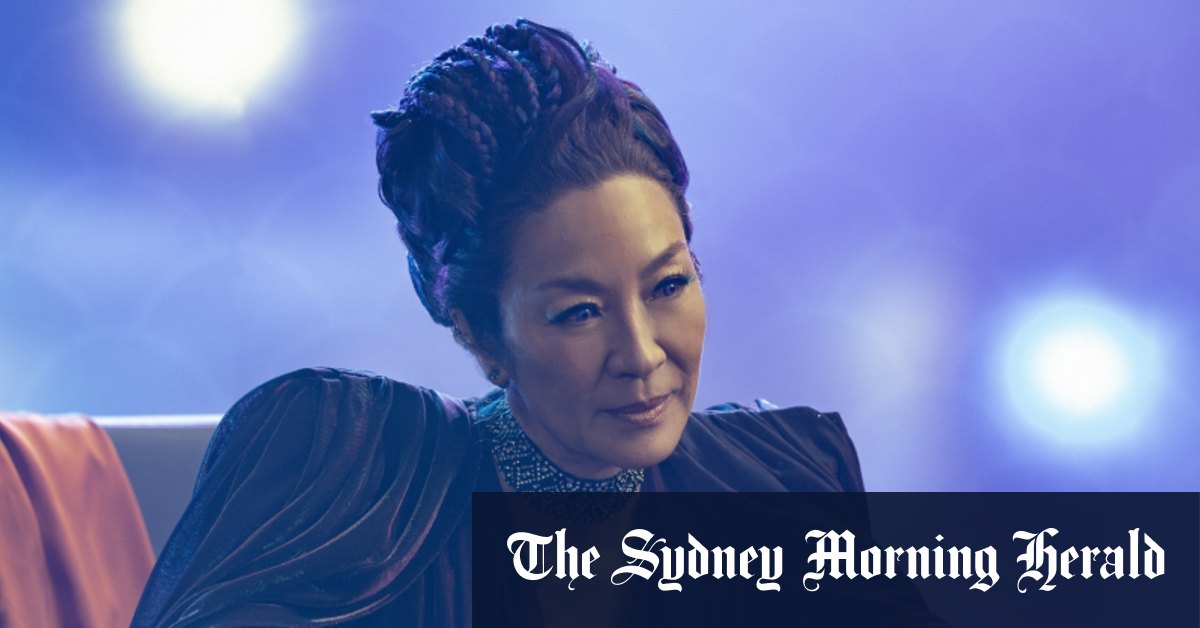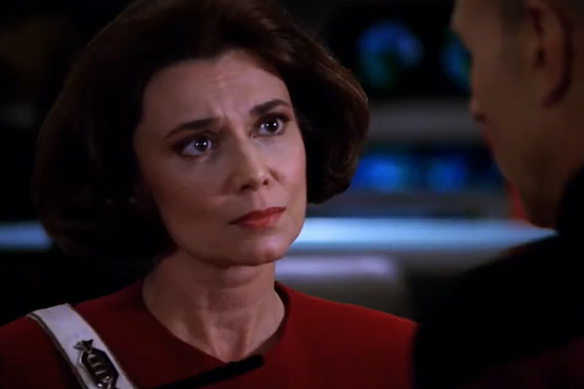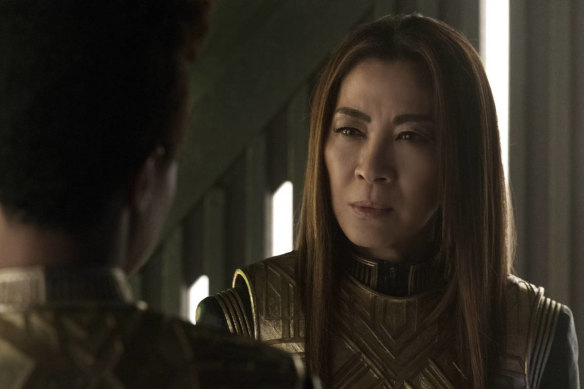
Yeoh was willing, but her schedule was tight, forcing the Section 31 series to be retooled as a film. “There is a bloody ton of repurposing and using the ideas [from the series],” Sweeny says. “We had all kinds of wonderful high-concept sci-fi ideas and it was set in a capitalist corner of the galaxy.”
Instead, the film “became much more about Michelle’s past in a more direct way, and I think that was the appropriate choice for the movie”, Sweeny adds. “But you’re taking a lot of those characters and repurposing them for a much shorter and more compressed experience.”

Tricia O’Neil’s Captain Rachel Garrett gets a reboot in Star Trek: Section 31.Credit: Paramount Television
The film also features a team of agents, working for the Federation’s “black ops” agency, Section 31: strategic mastermind Alok (Omari Hardwick), shape-shifting Quasi (Sam Richardson), Zeph (Robert Kazinsky), who wears a mechanical exoskeleton, the “irresistibly magnetic” Melle (Humberly Gonzalez), and Fuzz (Sven Ruygrok), who has some anger issues.
But one character stands out from the group because of her place in established Star Trek canon: Rachel Garrett (Kacey Rohl), who is a young security operative here, but will in the years to come rise to the rank of captain and take command of the USS Enterprise, NCC-1701-C, which audiences met in the Next Generation episode “Yesterday’s Enterprise”.
Like Kirstie Alley’s Lieutenant Saavik in Star Trek II: The Wrath of Khan, the character of Rachel Garrett – then played by actress Tricia O’Neil – was an immediate hit with fans. Captain Garrett famously led her USS Enterprise into battle against the Romulans to save a Klingon colony, in a turning point in the history of the fictional Federation.
“She stood out to me in the same way she stood out to you and stood out to a lot of people,” Sweeny says. “Her death is so meaningful at the end of that episode, and it is those moments where people die in Star Trek, these characters [who embody] this idea of common values and goals and sacrifice for the greater good, it just really hits home. And Rachel always embodied that for me.

Michelle Yeoh as Philippa Georgiou in Star Trek: Discovery.Credit: Ben Mark Holzberg / Paramount+
“When I knew I wanted to pursue having a Starfleet voice on the team, she was a natural [choice] because that was always a character that I had dog-eared, [who] I want to know more about,” Sweeny says.
“It’s a complete fandom thing,” Sweeny adds. “I just wanted to see more of her. And … to everybody’s credit, nobody pushed back on that. From the moment I pitched it, people were like, yes, of course. And we were close enough timeline-wise where we could just shift things a little bit to accommodate the timeline that we needed to accommodate.”
In the meantime, Sweeny is working on Watson, a reboot of the Sherlock Holmes story focused on his ever-reliable sidekick, Dr Watson. In some respects, the two projects open up the same questions about canon: how much can you change a thing before it stops being that thing.
Loading
“The idea of gender flipping Watson, when Lucy Liu played that character in Elementary [which Sweeny produced], really rubbed a lot of people the wrong way,” he says. “It took some time for people to accept her, and she’s among the great Watsons of history. People love that character, and rightfully.
“The boundaries of the sandbox are perhaps a little bit less rigidly defined, but they’re there,” Sweeny adds. “You just don’t want to flout what’s important to people, [so you develop] an instinctual set of boundaries.
“Both fictional worlds provide you with a way of seeing the world around you, and each provides a system for parsing the things that happen to you in life,” Sweeny says. “They make a kind of promise that if you apply those principles, your life will be improved. And I think that’s immensely appealing.”
Star Trek: Section 31 streams on Paramount+ from January 24.



